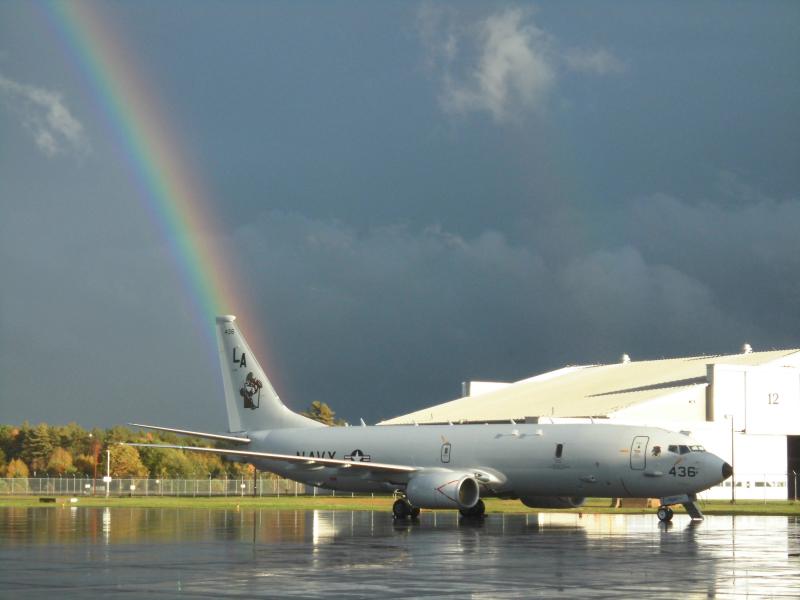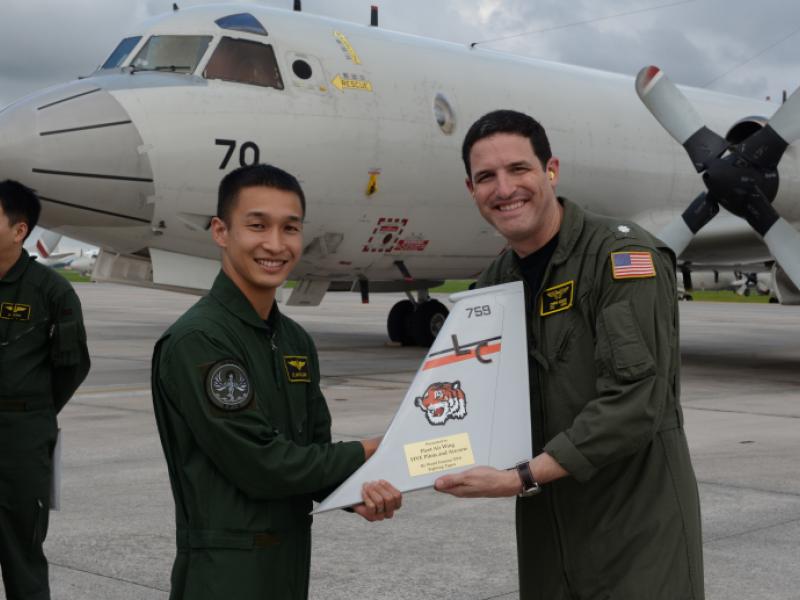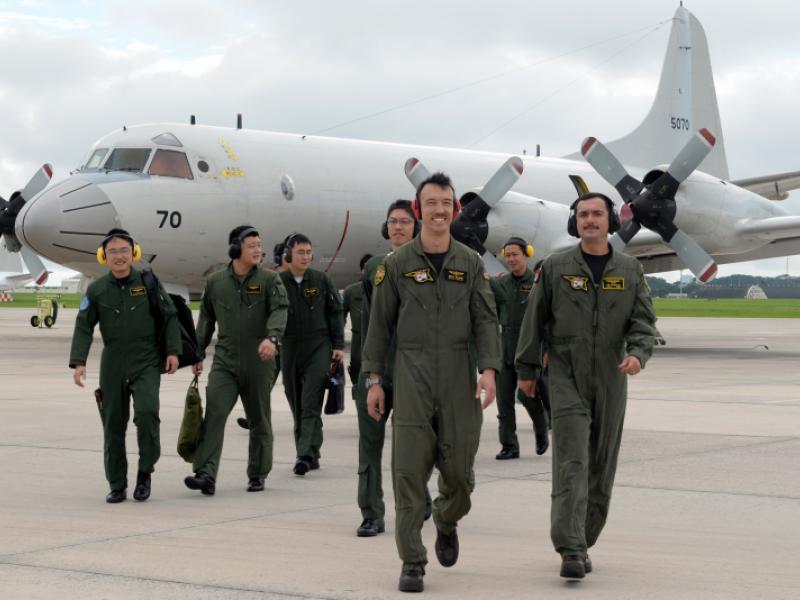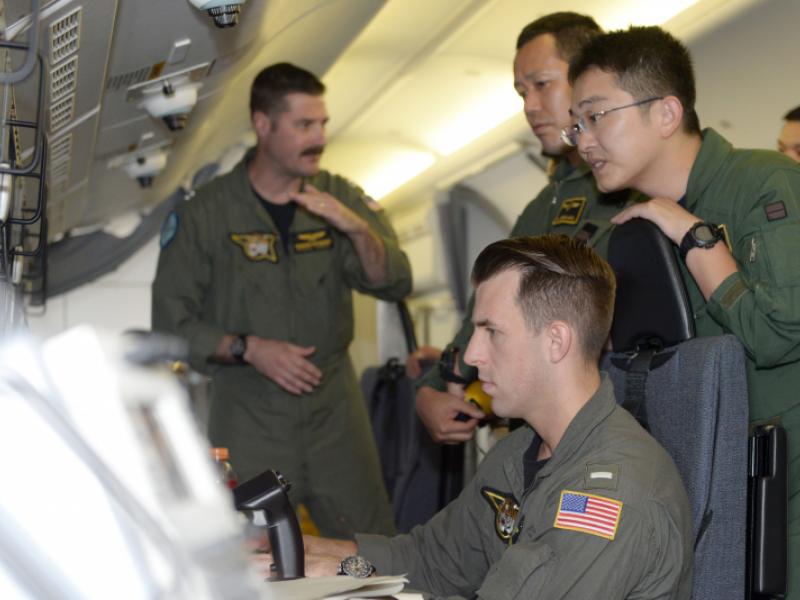2016-09-03 By Robbin Laird
A new aspect of building, modernizing and evolving the combat capabilities of the new generation of combat aircraft is software upgradeability.
Software upgradeability provides a key opportunity to evolve the capabilities of an air combat platform without having to change the hardware and correlated software configurations through a complicated upgrade process.
One such aircraft is the F-35. Many of the critics of the F-35 have simply missed the point about the F-35, namely that the evolving blocks of software make it an evolving capability aircraft throughout its lifetime.
As Dan Osburn, Deputy Director, 461st Flight Test Squadron (FTS), Intergrated Test Force / Director of Projects, put it during a visit earlier this year to Edwards AFB:
“Software blocks are about combat capabilities, or mission sets. They are additive.
“It is not about whether we have an effective combat product. For example, Block 2B, the USMC aircraft, is an F-35 with clean wing and delivering three types of weapons.
“Over time, and rapidly, now the envelope will be expanded, but this does not mean the Marines do not have the most lethal combat aircraft they have ever had.
“Perhaps it would be better to describe our software approach as one of agile development, of taking a stable foundational software system and evolving its capabilities over time as the plane operates, and inputs come back with regard to what are the most desirable next steps.”
As then Deputy Commandant of Aviation who then became MARFORPAC, Lt. General Robling put it in an interview at the Paris Air Show in 2011:
“Question: What is the next great airplane after the F-35 and the Osprey?
Robling’s answer was something like this:
“Every few years the F-35B will be more capable and a different aircraft.
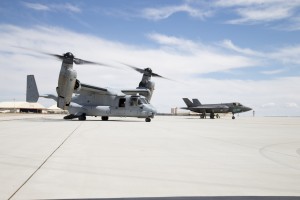
“The F-35B flying in 2030 will be significantly more capable than the initial F-35Bs.
“The problem is that will look the same at the airshows; but will be completely different inside.
“So you guys are going to have a tough time to describe the differences.
“It is no longer about adding new core platforms; it is about enabling our core multi-mission platforms.
It is a very different approach.”
To put it mildly, the critics simply do not get this; but although the F-35 is unique, it is about a generational shift with regard to configuring combat aircraft.
The first large combat aircraft to be software upgradeable is the Wedgetail air battlespace management aircraft built around a 737 airframe.
The Wedgetail version flown by the Australian Air Force has been battle tested in the Middle East and has proven itself to be the most advanced air battlespace management system operating today.
But to get there, required the Aussies to change their procurement mindset.
Instead of setting a hierarchy of requirements, which the aircraft had to meet, they froze the software baseline and put it in the hand of the warfighters and then let them evolve the aircraft in dialogue with the software engineers.
When I interviewed 2nd Squadron at Williamtown Airbase, the squadron operating Wedgetail, the Squadron Commander underscored the challenge of understanding software upgradeability:
“This is a software upgradeable aircraft with a defined launch point (IOC) but no fixed end point (FOC).
“The system will always be evolving and growing as the software code gets rewritten to reflect events and demands from the squadron.
“The squadron works through its experience and shapes change orders, which get sent to the procurement authorities to sort out priorities for the next round of upgrading the aircraft.”
The difference between older and such a new system was outlined by one participant during the visit as follows:
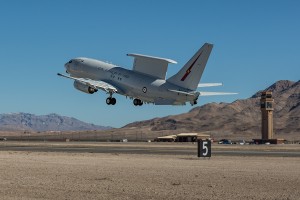
“We have in the same time frame bought a CRC system full up which will look pretty much like it is in 20 years; with Wedgetail it will look nothing like it does now in 20 years.”
This process of upgrading means that the software engineers work closely with the operators in shaping the evolution of the aircraft.
This is a very different approach from legacy systems.
As Paul Kalafos, Vice President of Surveillance Systems at Northrop Grumman has put it:
“We are getting significant feedback from the RAAF on deployment and requests to automate tasks where possible to enhanced the capability of the machine part of the man-machine relationship to shape a way ahead.
“A lot of the input is through the ARCS working group, which is a collaborative study environment involving Boeing, Northrop Grumman, MIT/Lincoln Labs, Air Force Life Cycle Management Center (AFLCMC), CEA Technologies, Defence Science and Technology Organisation (DSTO), Royal Australian Air Force (RAAF), and the Common Wealth of Australia (CoA). Operational requirements come out of that process and shape the next increment of software development.
“The ARCS is focused on problems and their resolutions.
“These are software updates.
“We get a software refresh out about once a year. Six months are spent doing the study to shape the plausible change; and the next six months are spent doing the integration and then getting it out the door. We shed the specs in favor of resolving problems, which the operational community identified.
“They can even write recommended change requests as well which provides part of the demand side process.”
The P-8/Triton replacement for the P-3 is following a similar process of change.
During a visit to Jacksonville Naval Air Station in late May 2016 with my colleague Ed Timperlake, we had a chance to talk with the P-8/Triton team shaping the new maritime domain awareness strike capability replacing the P-3.
In our discussion with Captain Corapi, the Wing Commander of Patrol and Reconnaissance Wing 11, we focused on how the evolution of the P-8/Triton dyad was subsuming within it several of the earlier capabilities flown by the US Navy to do ASW but was doing so from the standpoint of creating a whole new digital capability, one which could be seamlessly integrated with the air and maritime forces.
It is not just a Navy asset; it is a joint and combined warfighting capability, both informed by and informing the entire force operating in the extended battlespace.
“This airplane is completely different from the P-3. It is much more automated, so much more. Everything is just set up so much different in the cockpit, just in particular. We’re finding that the aircrews are making that leap with really no issue.
“Because there’s so many young aviators now that have never seen a P3 and they’re innovating from the ground up, they’re learning how to fight the airplane in a completely different way.”
The combat learning cycle undergone by the P-8 Wing and by the coming Triton squadrons is convergent with the software upgradeable nature of the new air systems.
“All of the squadrons in the Wing are the baseline P-8.Soon these baseline aircraft will be upgraded to Increment 3
“Increment 3 will enhance the networking and communications capability of the aircraft.
“But the core point is that even the baseline aircraft is better than and different from the P-3 from the ground up and the crews are learning the skill sets for a P-8, rather than staying within the boundaries of what a P-3 can do and how it operates.”
The acquisition strategy was similar to the Wedgetail in terms of freezing a baseline.
“In 2005 we snapped a chalk line and we said, ‘Technology, as it exists today, is what goes in this airplane.’ We’ll do the spiral upgrades later. It was a brilliant move.”
And in a follow-up interview with Commander Miguel Martinez, CO of Patrol Squadron 16 and Commander Amanda Hawkins, the Executive Officer of the Squadron, the importance of software upgradeability was highlighted as well.
The evolution of software aboard the software upgradeable aircraft was part of the ongoing transition which might be characterized as a “permanent revolution,” if what is being experienced to date is continued into the future.
“We have just completed our second deployment.
“A lot of the capability on that deployment did not exist during the first.
“And the main difference was because of software upgrades.”
And as they prepare for their next deployment, more software upgrades are under way.
And the CO commented that the “operators are telling me that we will have capabilities through the software upgrades that would have been extremely useful during the last two deployments.”
And software applies as well to the weaponization of the aircraft.
For now, the P-8 is flying traditional P-3 weapons; but with its software upgradeable weapons system there is no reason to continue such an approach.
In an interview during the Jax Navy visit with the Deputy Commander, Patrol and Reconnaissance Wing ELEVEN, Captain James Robinson, the point was driven home about the weaponziation opportunity for the P-8.
“Because the P-8 operates with the common 1760 Bus which is a common weapons standard for smart weapons, the only limit is your imagination with regard to what weapons might be put on the P-8 in the future.
“It is forward compatible with future smart weapons.”
At some point in the future, the P-8 could be in the battlespace armed with hypersonic cruise missiles to go with its capability to see deep into the battlespace.
By building key capabilities for prevailing in the extended battlespace, the USN is building towards the future as it deploys in the present.
During a visit to RAF Lossiemouth earlier this year, there was chance to discuss the coming of the P-8 to the RAF.
The key RAF officer had met with a Navy Captain who had deployed with the P-8 to the Joint Warrior exercise.
During that meeting, the RAF officer highlighted that he was very impressed with the aircraft and very interested in the weapons hard points on the aircraft and their potential for operating in the North Atlantic.
It turns out that the USN Captain involved was none other than Captain Robinson who remembered the exchange well and in his train and equip role was talking with the Brits about future infrastructure for support to the P-8. RAF Lossiemouth is one of the candidate bases for operating UK P-8s as well.
Captain Robinson had worked earlier for Admiral Gortney who in our interview with him had highlighted the threats at the 10 and 2 O’Clock to North America, and when at Joint Warrior, Captain Robinson was operating in the 2’Oclock.

Norway is interested as well in the P-8 which then create a significant interlocking force. For Norway, because the P-8 is not a P-3, they would benefit from seeing much deeper into the maritime space to protect their interests. It is not just about flying to an area of interest and patrolling it. When you take off with the P-8 you link into the data network and are on station when you take off.
As Captain Robinson put it:
“With the P-3 we flew together and shaped a common operating picture largely by voice communication or the archaic link 11.
“It was always a challenge.
“With the P-8 we can share data electronically over hundreds of miles being able to link with other line of site contributors.
“We will be able to have maritime domain awareness over huge square miles of ocean that can be covered by a single P8, even before we discuss what Triton brings to the effort.
“You have a single sensor that from the time aircraft depart is operating miles and miles away, having domain awareness and feeding a common operational picture to the commander or a set of commanders.
That’s incredible.”
And the software will evolve with the evolution of the threat and the coming of additional opportunities to shape a “new” aircraft, which will look the same but not operate the same in the battlespace.
That is the point about software upgradeability.
The slideshow above shows the P-8 working with the Japanese navy. Credit Photos: US Navy


